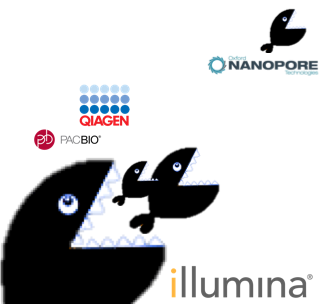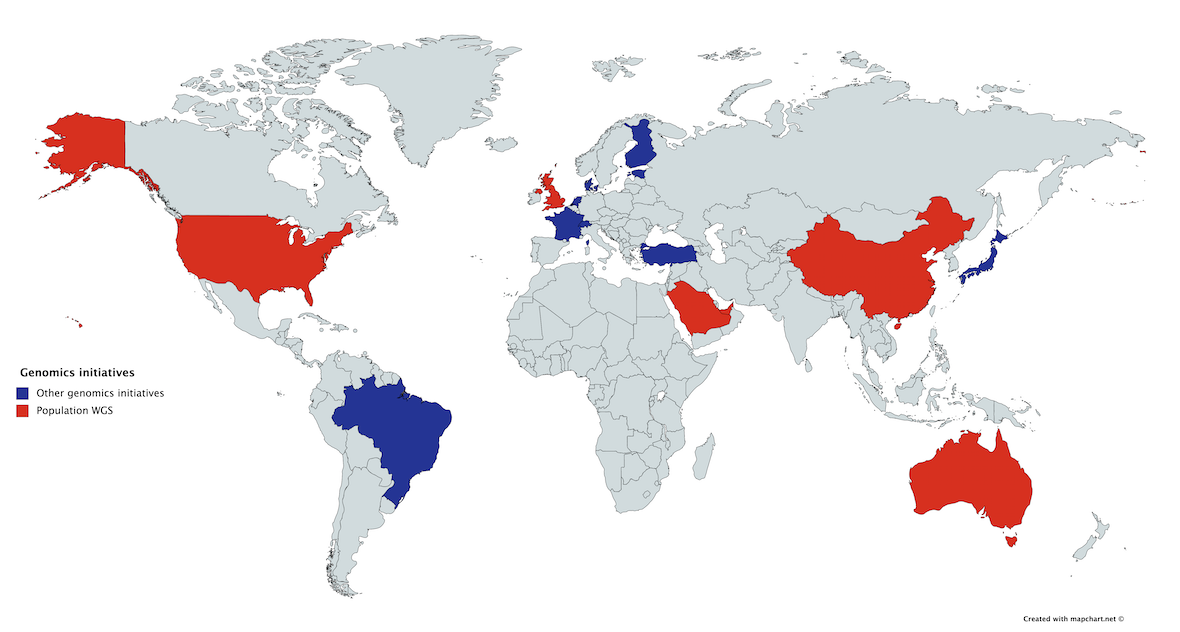I’m predicting that 2017 will be the breakthrough year for nanopore sequencing. Having seen what’s been going on over the last 12-24 months I’m pretty confident that we’ll see at least one NGS niche being taken over by Nanopore sequencing in 2017. Whether this will be bacterial genomics, long-read scaffolding for complex genomes, direct RNA-Seq or something else I’m not sure. But I am certain we’ll see some amazing work published next year!
I’m kicking off these posts with a summary of Andrew Smith’s talk at the New York Community meeting, the stateside equivalent of London Calling, earlier this month.
Andrew is a post-doc in Mark Akeson’s UCSC group. He and I met at London Calling and had a great discussion after one of the afternoon sessions. I’d asked a question about the relevance of amplicon based 16S sequencing given the announcement of direct RNA-Seq by Clive earlier in the meeting. I wrote about this at the time but did not want to hint that Andrew was working on this at the time. We’ve not kept the conversation going (sorry Andrew) but the project looks to have been a big success.
“Direct RNA-seq on nanopores is “the” disruptive technology of 2016″
Andrew talked about three things PolyA-transcript sequencing (briefly), cells to 16S rRNA sequencing, and tRNA sequencing. He began with the briefest of reviews of Mark Akeson’s research on nanopores but somewhat surprisingly did not mention the Helicos direct RNA-Seq method, now commercialised by SEQ-LL. His introduction finished with a reference to the paper from Dan Turner’s group at ONT: Highly parallel direct RNA sequencing on an array of nanopores, see Garalde et al.
- Fig1
- Fig3
- Fig2
- Fig4
Andrew spent only a tiny amount of time talking about nanopore polyA sequencing. Instead he focused on direct sequencing of unamplified 16S rRNAs on a nanopore. This was a potential application I wrote on my old blog about after May’s London Calling event.
The development of rRNA fingerprinting of 16S ribosomal RNA, allowed Carl Woese to propose a new the Archea as a new domain in the kingdom of life in 1970s. Most subsequent phylogenetic taxonomy has focused on sequencing of DNA amplicons in rRNA variable regions (figure 1 in the gallery above). Longer reads improve the quality of species discrimination. Long-range PCR is a good step, but the ideal would be to sequence the rRNA with NO prep. Andrew described this as something he’s been dreaming about for a while, and it’s exactly what he described in the rest of his talk?
There were some very interesting and difficult to resolve issues with getting the sequencing to work. The team developed a custom 16S splint to hybridise to 3′ end of 16S rRNA, and used a group 2 reverse transcriptase (TGIRT was on a slide I think). But the initial results showed very few full length reads, with big drops in coverage (highlighted on figure 2). The read appeared to be dying well before full-length? Andrew explained how the modified nucleotide 7mG, meant there was strand scission of RNA at 7–methylguanosine. This could be seen as a strand cleavage product on their gels (figure 3). The coverage drops indicated show where RNA cleavage may be occurring, and where modified nucleotides may be present. Using a modified cDNA prep with ONT 1D kits the team were able to demonstrate the RNA itself was intact. Other experiments showed that the RNA was being broken down during library prep. Performing reverse transcription at 50C vs 41C showed a big shift towards longer read lengths at lower temperatures. Interestingly 16S sequencing prep without RT gave similar results.
Their results meant the team tried a rapid method for 16S rRNA from a Total RNA prep using a 16S splint in library prep. They were able to go from cell culture to 16S sequence in an hour! Over 20,000 nanopore reads mapped mostly over 1000bp. Mapping and classification accuracy increased with read length (figure 4). They can get to 99% accuracy at over 800bp. These results demonstrate that 16S direct RNA-Seq might be a very rapid identification tool. And if combined with polyA sequencing may allow clinicians to pull out anti-microbial markers from patient samples.
tRNA-Seq: The last section of Andrew’s talk focused on tRNA-seq using a custom ONT adapter. Essentially tRNAs are ligated to a splint and pulled directly through the pore, probably reforming their complex secondary structures on the other side of the pore.
- tRNA library prep
- tRNA sequencing
Direct RNA-seq is a fundamentally different way for sequencing. But it was clear from Andrew’s talk that w need to be careful about how we think about RNA handling. This is likely to result in us finding new RNA biology – think about how we used to discard microRNAs to get a nice “clean” mRNA prep!













[…] Sequence RNA – “simples!”. Perhaps the most exciting development in RNA analysis (Here’s my post from late last year). Currently takes 2 hours, moving to rapid prep in just 30 minutes by ligating RNA protein motor on […]
[…] presentation on cDNA-Sequencing work, and although arguably the most exciting work presented was on direct RNA-Seq, I think many people will get their first taste of RNA-Seq on Nanopores via one of the two cDNA-Seq […]